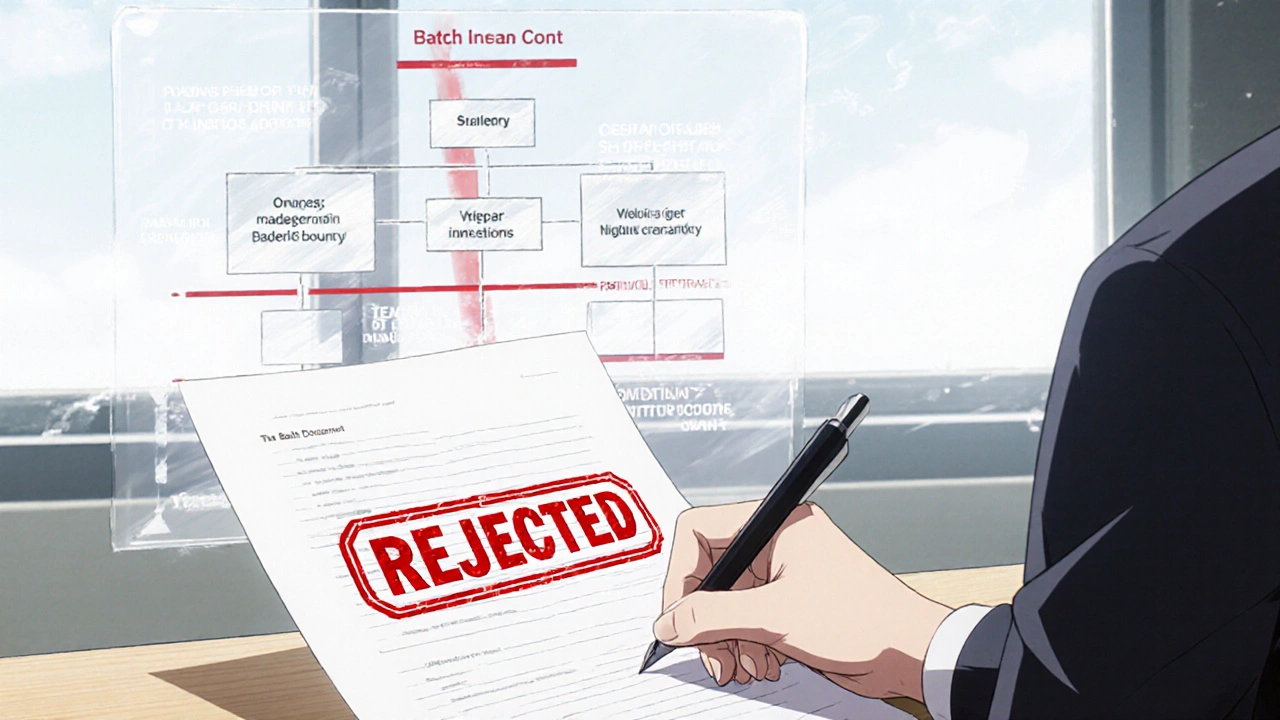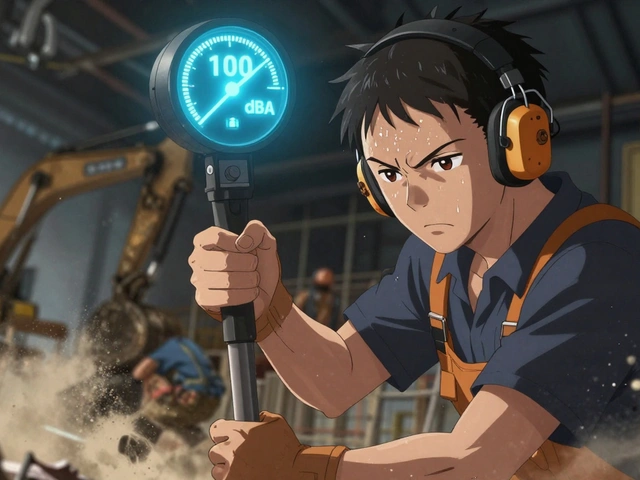When a batch of medicine fails, it’s rarely because someone forgot to check a label. It’s because the person who could have stopped it didn’t have the power to do so.
What Exactly Is a Quality Assurance Unit?
A Quality Assurance Unit (QU) isn’t just another department in a factory. It’s the final gatekeeper. In pharmaceuticals, medical devices, and nuclear production, this unit has one job: make sure nothing leaves the facility unless it’s safe, effective, and meets every regulatory standard. And to do that right, it must be completely independent from production. The FDA made this clear back in 2006: the team responsible for approving or rejecting a batch cannot report to the team that made it. Why? Because when the same people are chasing efficiency, deadlines, and profits - and also deciding if a batch is safe - something gives. Usually, it’s the quality. This isn’t theory. It’s law. Under 21 CFR 211.22, the quality unit has the legal authority to reject components, packaging, in-process materials, and finished products. No exceptions. No votes. No appeals to the production manager.Why Independence Isn’t Optional
Think of it like a fire alarm. If the person who turns off the alarm is the same person who started the fire, you’re not safe. That’s what happens when quality reports to production. In 2024, the FDA issued warning letters to 68% of inspected facilities for independence failures. That’s up from 29% in 2020. These aren’t small issues. They’re red flags that batch release decisions were influenced by production pressure. One case from a mid-sized pharma company in Ohio shows how quickly things go wrong. After restructuring, the production manager was also named head of quality. Three months later, two critical deviations slipped through - both involving contaminated vials. The team didn’t have time to investigate properly. The batch was released. The recall cost $2.7 million. And the FDA shut down the line for six weeks. The IAEA found that organizations with true independence had 37% fewer critical compliance failures during inspections. That’s not luck. That’s structure.How Independence Actually Works
A compliant QU doesn’t just review paperwork. It has real power:- Can halt production at any time
- Can reject entire batches without approval from manufacturing
- Has direct access to the CEO or Board - no middlemen
- Owns the final sign-off on every batch released to market
- Reviewing and approving all production procedures
- Auditing records to make sure they’re accurate and complete
- Running trend analyses to catch problems before they become crises

What Happens When Independence Is Compromised
The data doesn’t lie. When quality and production are tangled:- 63% of data integrity violations come from integrated teams
- Facilities with QU-to-production ratios below 1:15 have 3.2 times more repeat deviations
- 42% of warning letters to small companies (under 50 employees) cite QU independence failures
How Big Companies Get It Right
Large manufacturers don’t wing it. They design the QU like a firewall:- Separate budget: The QU doesn’t rely on production for funding
- Direct reporting: QU head reports to the CEO, not the plant manager
- Clear documentation: Organizational charts show reporting lines - and they’re updated every quarter
- Training: QU staff have 8+ years of experience on average and are trained in GMP, statistics, and conflict resolution
Small Companies Can’t Afford to Skip This
If you’re a small manufacturer with 20 people, you might think you can’t afford a separate QU. But you can’t afford not to have one. The answer isn’t to merge roles. It’s to outsource. Third-party quality oversight services are growing at 14.2% a year. These firms provide trained auditors who report directly to your leadership - not your production floor. Some even offer remote monitoring tools that flag anomalies in real time. You get the independence without the full-time salary.
What’s Changing in 2025
Digital manufacturing is shaking things up. AI now predicts defects before they happen. Sensors track temperature, humidity, and pressure in real time. So where does the QU fit in? The FDA’s 2025 draft guidance says: independence isn’t about location - it’s about authority. Even if an algorithm flags a batch as “high risk,” a human from the QU must still make the final call. And that human must not be the same one who programmed the algorithm. The European Commission just tightened its rules too. Under the 2024 EudraLex revision, quality units can no longer be “organizationally subordinate” to production - under any circumstances.How to Build a Compliant QU
If you’re setting this up, here’s your checklist:- Designate a clear QU leader with authority to reject batches
- Ensure they report directly to the CEO or Board - no production layer in between
- Give them their own budget and staffing - no shared headcount
- Document everything: reporting lines, approval workflows, hold procedures
- Train QU staff in GMP, statistics, and how to push back without fear
- Review organizational charts quarterly - update them if roles change
Final Thought: Quality Isn’t a Department - It’s a Culture
A good QU isn’t the enemy of production. It’s the reason production can keep running without shutdowns, recalls, or lawsuits. It’s the quiet force that lets you sleep at night knowing your product won’t hurt someone. The best manufacturers don’t see quality as a cost. They see it as the only thing that makes their business sustainable.Can a production manager also be the quality unit head?
No. Regulatory agencies like the FDA and EMA explicitly prohibit this. If the person who runs production also approves batches, there’s a conflict of interest. Even if they’re well-intentioned, production pressure will influence decisions. This is one of the top reasons for FDA warning letters.
What if my company is too small to have a full QU?
You don’t need a big team - you need independence. Many small manufacturers use third-party quality oversight services. These firms provide trained auditors who report directly to your leadership, not your production floor. They handle batch reviews, audits, and compliance checks without being part of your internal team.
Does the QU need to be in the same building as production?
No. Location doesn’t matter - authority does. A QU can be remote, as long as they have full access to records, production data, and the power to halt operations. Many companies now use digital platforms that let QU staff review batches, audit logs, and sensor data from anywhere - while still maintaining separation.
How often should the QU audit production processes?
At minimum, quarterly. But the best QU teams audit based on risk. High-risk lines (like sterile injectables) get audited monthly. Low-risk lines (like oral tablets) may be audited every six months. Trend data from past deviations should drive the schedule - not a calendar.
What skills should QU staff have?
GMP training is mandatory. Beyond that, they need statistical process control (SPC) to spot trends, knowledge of regulatory requirements, and strong conflict resolution skills. The best QU staff aren’t just rule-enforcers - they’re problem-solvers who can explain why a batch is risky without sounding like they’re accusing anyone.
Is QU independence required outside of pharmaceuticals?
Yes. Nuclear energy, medical devices, and aerospace manufacturing all require independent oversight. The IAEA mandates it for nuclear facilities. The FAA requires it for aircraft parts. Even ISO 9001-certified companies are moving toward stronger separation because integrated systems lead to more failures.






10 Comments
Jefriady Dahri
November 25, 2025Man, I’ve seen this play out in a small pharma lab in Bangalore-production guy also signed off on QC. One batch of insulin had particulates. No one caught it till a patient had a reaction. We lost a client, and the guy got fired. But the damage? Already done. 🤦♂️
Andrew Camacho
November 26, 2025Oh wow, another ‘quality is sacred’ sermon. Let me guess-next you’ll tell me firefighters shouldn’t be allowed to drive the firetruck because they might be tempted to start a fire? 😂 This is why American manufacturing is dying. You can’t separate quality from output. It’s one system. Stop treating engineers like criminals.
Elise Lakey
November 27, 2025Is there any data on how many of those 68% warning letters were from companies that were already under financial stress? I wonder if the independence issue is really about structure-or about resources.
Erika Hunt
November 28, 2025I’ve worked in both big pharma and small medical device shops, and honestly, the biggest problem isn’t the reporting structure-it’s the burnout. The QU is always understaffed, overworked, and treated like the department that says ‘no’ all the time. So when someone says ‘just sign it, we’re behind,’ it’s not always malice-it’s exhaustion. And then the system fails, and everyone points fingers. It’s a cycle.
And yes, independence matters-but so does compassion. If you don’t give the QU enough people, enough time, and enough respect, you’re setting them up to fail, even if they report to the CEO.
Also, remote QU teams? Brilliant. I’ve seen one in Colorado review batches from a plant in Tennessee via digital logs, and they caught a temperature drift that no one on-site noticed because they were too busy chasing deadlines. Location doesn’t matter. Power does.
But here’s the thing: if the CEO doesn’t back them up publicly, the QU’s authority is just a piece of paper. Culture eats policy for breakfast.
Pallab Dasgupta
November 28, 2025Bro. I work in a nuclear plant in Hyderabad. We have a QU team of three. They don’t even sit in the same building. They get real-time sensor feeds, audit logs, and can shut down a reactor if they smell something off. No one argues. Why? Because last year, they stopped a coolant leak before it became a crisis. We all owe them our jobs. No drama. Just respect.
Ellen Sales
November 30, 2025I think the real issue here isn’t independence-it’s fear. Fear that if you give someone real power to say no, they’ll use it. Fear that if you separate quality from production, you’ll create an ‘us vs them’ culture. But the truth? The QU isn’t the enemy. The enemy is the belief that speed is more important than safety. And that belief kills people. Not the auditors. Not the paperwork. The mindset.
My uncle worked in a factory where the QA guy got fired for holding up a batch. Three months later, a child got sick from a contaminated product. The company paid millions. The CEO retired. The QA guy? He opened a consulting firm. And now he’s richer than ever.
So maybe the real question isn’t ‘how do we structure the QU?’ Maybe it’s ‘how do we stop rewarding bad decisions?’
Josh Zubkoff
December 1, 2025Let’s be real. This whole ‘independent QA’ thing is just corporate theater. The FDA doesn’t care. They’re just looking for paperwork. Companies hire a guy with a title, give him a corner office, and then quietly tell him to ‘be reasonable.’ The system is rigged. You can’t have independence when your budget comes from the department you’re supposed to police. It’s a joke. And anyone who says otherwise is either lying or delusional.
fiona collins
December 2, 2025Outsourcing QA works. I’ve seen it. Clean, clear, no conflict. And the auditors? They’re better than in-house teams because they’ve seen 20 factories. They know the red flags.
Rachel Villegas
December 3, 2025My company outsourced our QA to a firm in Texas. They flagged a batch we’d already shipped. We recalled it. Lost $800k. But we didn’t get a warning letter. And our next audit? Passed with flying colors. Worth every penny.
Andrew Camacho
December 4, 2025Oh so now you’re outsourcing to avoid accountability? That’s not independence-that’s outsourcing blame. You think a third-party auditor gives a damn about your brand? They just want their fee. And when the next recall happens, you’ll be the one in court while they’re on their next contract. Classic American short-term thinking.